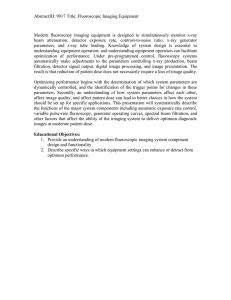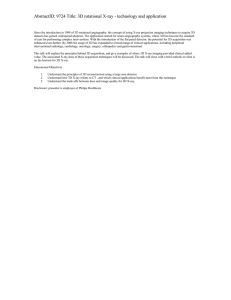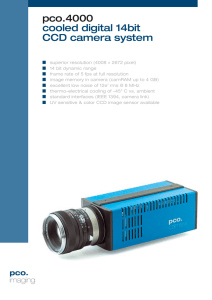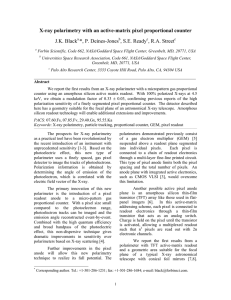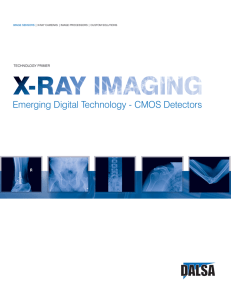The SenoScan is a scanning-slot system designed for high-resolution breast... intrinsic scatter rejection. The main system design features follow. ...
advertisement
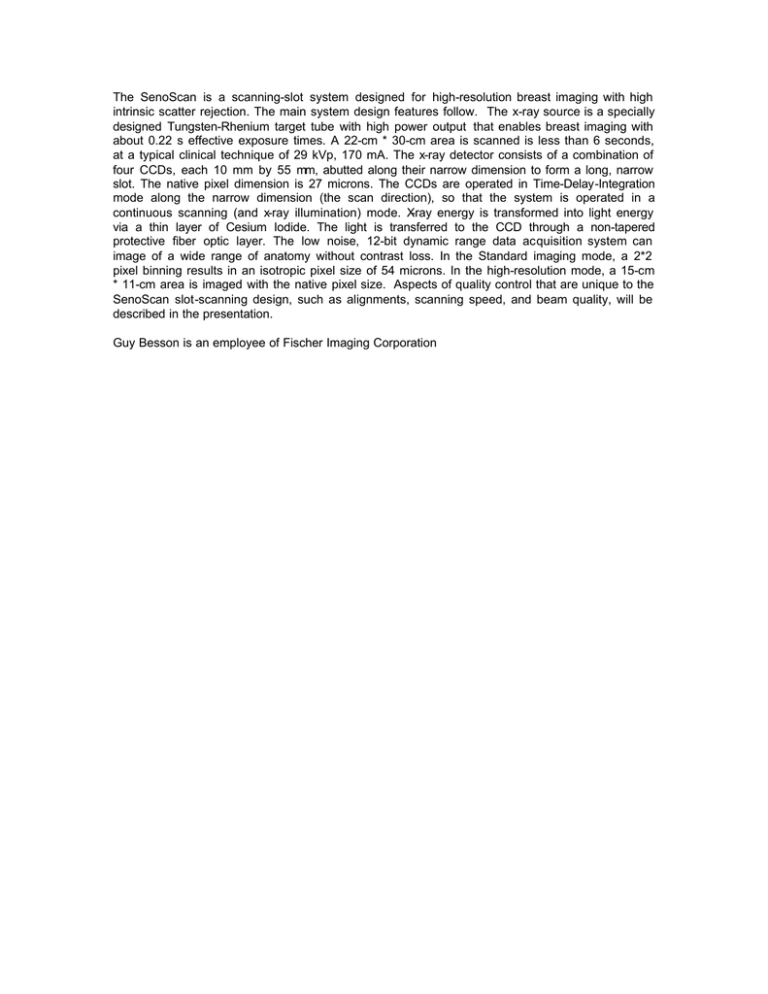
The SenoScan is a scanning-slot system designed for high-resolution breast imaging with high intrinsic scatter rejection. The main system design features follow. The x-ray source is a specially designed Tungsten-Rhenium target tube with high power output that enables breast imaging with about 0.22 s effective exposure times. A 22-cm * 30-cm area is scanned is less than 6 seconds, at a typical clinical technique of 29 kVp, 170 mA. The x-ray detector consists of a combination of four CCDs, each 10 mm by 55 mm, abutted along their narrow dimension to form a long, narrow slot. The native pixel dimension is 27 microns. The CCDs are operated in Time-Delay-Integration mode along the narrow dimension (the scan direction), so that the system is operated in a continuous scanning (and x-ray illumination) mode. X-ray energy is transformed into light energy via a thin layer of Cesium Iodide. The light is transferred to the CCD through a non-tapered protective fiber optic layer. The low noise, 12-bit dynamic range data acquisition system can image of a wide range of anatomy without contrast loss. In the Standard imaging mode, a 2*2 pixel binning results in an isotropic pixel size of 54 microns. In the high-resolution mode, a 15-cm * 11-cm area is imaged with the native pixel size. Aspects of quality control that are unique to the SenoScan slot-scanning design, such as alignments, scanning speed, and beam quality, will be described in the presentation. Guy Besson is an employee of Fischer Imaging Corporation


